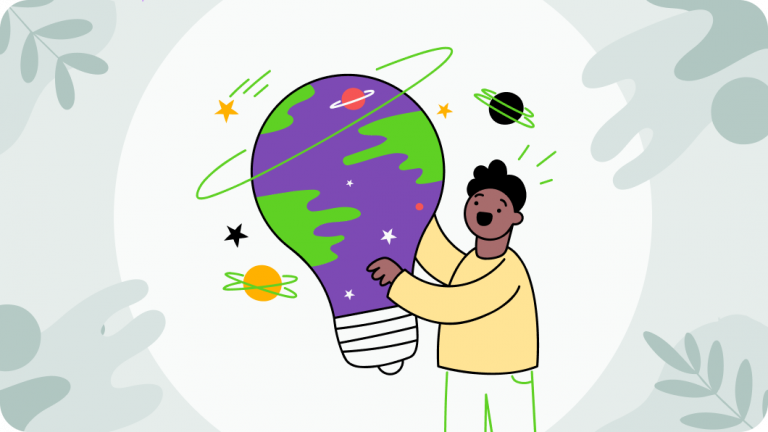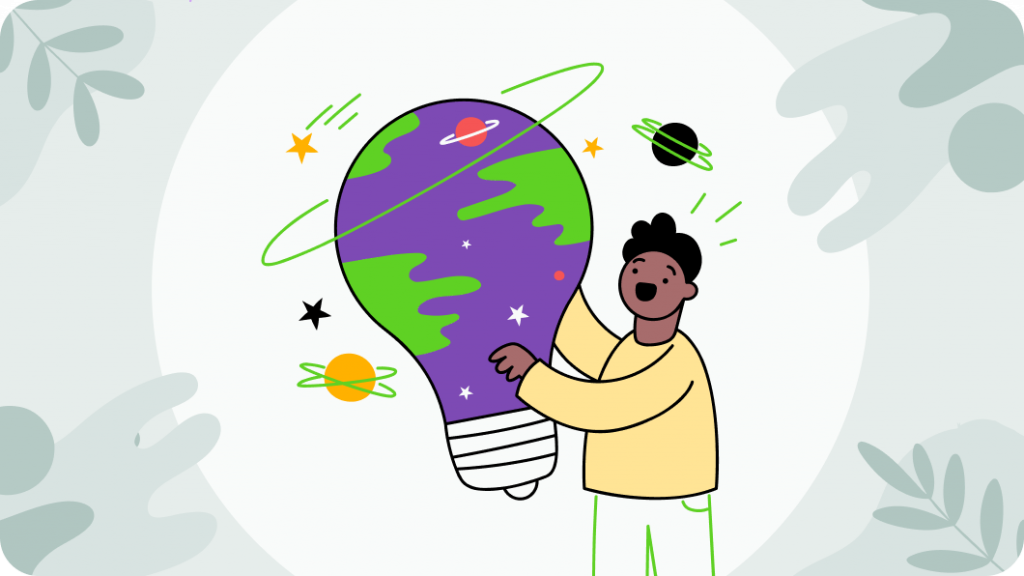The Power of the Pause
Have you ever found yourself lost in thought, only to return to your work with a brilliant idea? Or caught yourself doodling absentmindedly, then suddenly struck by inspiration? This isn’t just a coincidence. There’s a fascinating interplay happening in your brain between focused attention, mind-wandering, and the birth of creative ideas.
In this article, we’ll explore the psychology of creativity, mindfulness, and mind wandering, and provide practical tips for cultivating a sharp and imaginative mind.
This is not your typical mindfulness article. It’s not about advocating against mindfulness to enhance well-being, creativity, and productivity—we know this is beneficial. Instead, it’s about presenting a balanced view that mindfulness is not a one-size-fits-all solution or a magic fix. Yet, there are specific aspects of mindfulness that are worth considering before you dive in.
For instance, someone who has a history of trauma because they were abused and made to put their attention on a painful event as a form of punishment may have a difficult time purposefully directing their attention.
What happens when you’re mindful?
Mindfulness is about being fully present in the moment, like when you’re sitting at a stoplight and fully aware the light is red. It’s not about being on autopilot or moving without intention.
It’s about intentionally being present in the physical moment and observing all that’s about. The crucial aspect is observing with a nonjudgmental view, accepting your thoughts and experiences without criticism or self-doubt.
This means accepting; you are not frustrated at yourself for not responding swiftly and are not judging yourself.
An example of self-judgment and guilt can manifest in self-referential, degrading statements like, “Why did I doom scroll all night on social media?” “I shouldn’t have stayed up to watch that game.” or “Why did I read those two journal articles instead of taking a walk? That was dumb?”
If you’ve experienced the above, it is time to change that self-judgment to self-compassion. If you are interested in your self-compassion score, Dr. Kristin Neff has a resource just for you (referenced below).
Mindfulness brings about reflectivity, the capacity to be reflective and see what’s going on. Imagine yourself as a lamp looking directly at the plug that connects to the wall. Turning the light onto yourself genuinely helps.
You can call this the notice or the witness. You’re observing yourself, observing the energy flowing through you. Keep in mind that mindfulness is not reflexivity; it’s not judgmental. It’s not being pushed around by the world’s external forces or your daily environment.
Creative Reflectivity
When immersed in mindfulness, there has to be a sense of beauty in knowing that you are experiencing the world as it is and not as you want it to be. Creativity is ubiquitous. It’s a mix of our unique originality and our ability to adapt.
Creativity is fascinating because it can be explored through different concepts including mind wandering and focused attention. Here’s an example. Let’s say you have a difficult situation to figure out at work.
There are so many layers, functions, factors, and pieces that you must consider. You find yourself completely stressed because you’re always thinking about it, potentially leading to rumination.
You’re thinking about how the (expletive deleted) will I figure this out?
How is this going to work?
And then what happens if it doesn’t?
You hop in the shower because you’ve been working hard and haven’t taken care of yourself. And while you’re in the shower, running through your routine mindlessly, that is, on autopilot, an epiphany or idea metaphorically bursts from the heavens directly into your mind.
And you say, “I’ve got it.”
“Ah ha!”
“That’s it!”
During mind-wandering, the brain relaxes its focused attention, allowing the unconscious mind and the body’s sensory experiences to process information freely. This free processing can lead to unexpected connections and creative solutions emerging as if the brain is working on the problem in the background.
Think of it as your internal creative processor, focusing on interconnectivity and generating original connections. And remember, it’s vital to be nonjudgmental towards what comes up, fostering a sense of curiosity and openness.
As you practice mindfulness, you’re not only building a trait, you’re building a path to personal growth. Similarly, intentional mind wandering can also be a tool for self-improvement. As you practice mindfulness more, those traits become a part of how you show up. So why should you care?
Why would you care about another mindfulness story telling you all the psychological benefits, such as enhanced creativity and heightened perceptual clarity? Yeah, yeah. That all sounds great. It all sounds lovely. But what’s happening under the hood?
It’s all happening in the new part of our evolved brain, the prefrontal cortex, specifically the Default Mode Network (DMN). This is the well-known network associated with daydreaming and introspection. It’s where you connect ideas, reminisce, and ponder possibilities.
The Sweet Spot
The key to maximizing creativity lies in finding a balance between focused attention and the free-flowing associations of the DMN. Here’s where mindfulness comes in. By being mindful, you can:
Enhance mental flexibility: Mindfulness practices can improve your ability to switch between focused attention and mind-wandering, allowing you to explore diverse ideas.
Boost self-awareness: Mindfulness fosters a deeper understanding of your thought patterns. You can learn to recognize the cues that signal an insightful, mind-wandering session and leverage them for creative breakthroughs.
But we’re all dealing with complex living structures, complex lived experiences, and trauma, throwing in a bit of extra spice in addition to everything we’re dealing with daily. So here’s why you should care.
Because mindfulness is not just a concept, it’s a tool that empowers you. It doesn’t cost anything. You don’t necessarily have to go to an ashram, a temple, or a church to access mindfulness. You have this capacity within you. It’s our built-in operating system.
By being mindful, you are saying yes to the present moment, and saying yes to one instance is to say yes to all of existence. How can you put this knowledge into practice?
Here are some tips:
Schedule “daydream breaks”: Set aside dedicated time to let your mind wander. Doodle, walk, or relax, and allow your thoughts to flow freely without judgment.
Practice mindfulness meditation: Regular meditation strengthens neural connections, fostering a more integrated thinking approach.
Embrace the power of “aha moments”: When an insightful idea strikes during mind wandering, capture it immediately! Jot it down or record a voice memo to revisit it later in a focused state.
By understanding the psychology of creativity, mindfulness, and mind wandering, you can cultivate a brain environment that’s both sharp and brimming with creative potential.
Remember, the most innovative ideas often emerge from the interplay between focused attention and the free flow of the mind, so embrace the daydream with a dash of mindfulness, and watch your creative spark ignite!
Remember, this is just the beginning!
The field of neuroscience is constantly evolving, and there’s always more to learn about the fascinating interplay between the brain and creativity. Perhaps it is time we rethink the importance of taking a break and how mind wandering can be used to our advantage.















